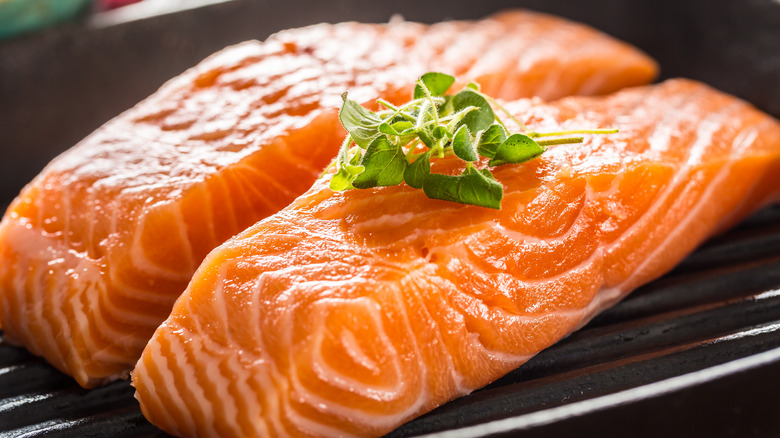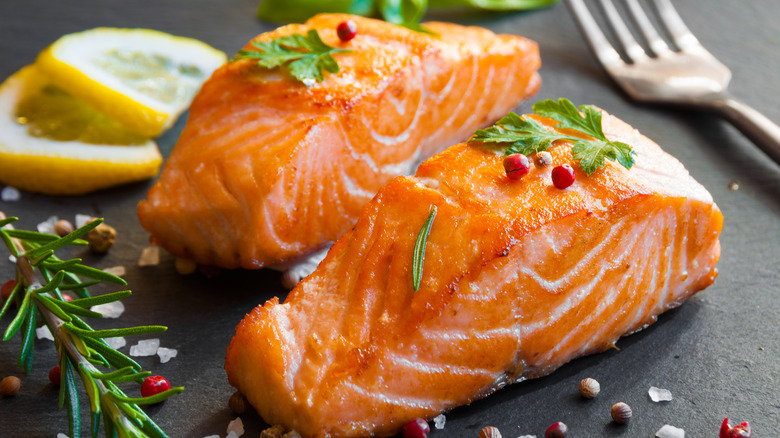What To Consider When Cooking Skinless Salmon In Your Cast Iron Skillet
Learning how to cook a picture-perfect salmon filet that doesn't stick to your cast iron pan can be tricky. The delicate flesh has shorter muscle segments than chicken or red meats, it can break apart easily, and that's even more likely if you've got a skinless filet. While cast iron can be naturally non-stick when it's seasoned and cared for properly, there are a few guidelines for readying the pan and the fish for a successful experience.
Any time you cook with a metal pan, either stainless steel, carbon steel, or cast iron, you must preheat the pan before adding oil or food to prevent sticking. Preheating allows the metal to expand slightly, closing the microscopic pores that can cause food to cling. Adding oil to the already-warm pan prevents overheating the oil and causing smoke in the kitchen. Season the salmon with salt and pepper while the pan heats, and then pat it dry on both sides before adding it to the pan to prevent the oil from splattering.
Getting perfect skinless salmon filets takes a touch of patience
Without the fatty skin to protect the filet from the hot cast iron skillet, you'll need to use slightly lower heat to cook a skinless salmon filet — medium to medium-low setting works best. When the pan is too hot, the proteins in the fish can bond to the metal, even when the skillet is properly preheated. Your goal is enough heat to create a thin layer of steam between the filet and the pan from the moisture in the fish, and high heat will boil that off too quickly. Once the fish is placed in the skillet, avoid touching it and allow the heat to form a crust on the fish. When it's time to turn the filet, use a wide flexible fish spatula for best results. The width of a fish spatula supports the delicate meat as you flip it. A very thin piece of salmon might not even need turning — cooking on just one side and basting with hot butter or popping the cast iron skillet in a warm oven is enough to cook the fish through.
Of course, there's no reason you can't add a bit of coating to the salmon to replace the skin. A light coating of panko breading adds flavor and crispness while protecting the fish from sticking to the pan. A small piece of oiled parchment paper between the fish and the pan can also prevent sticking while the salmon cooks.

